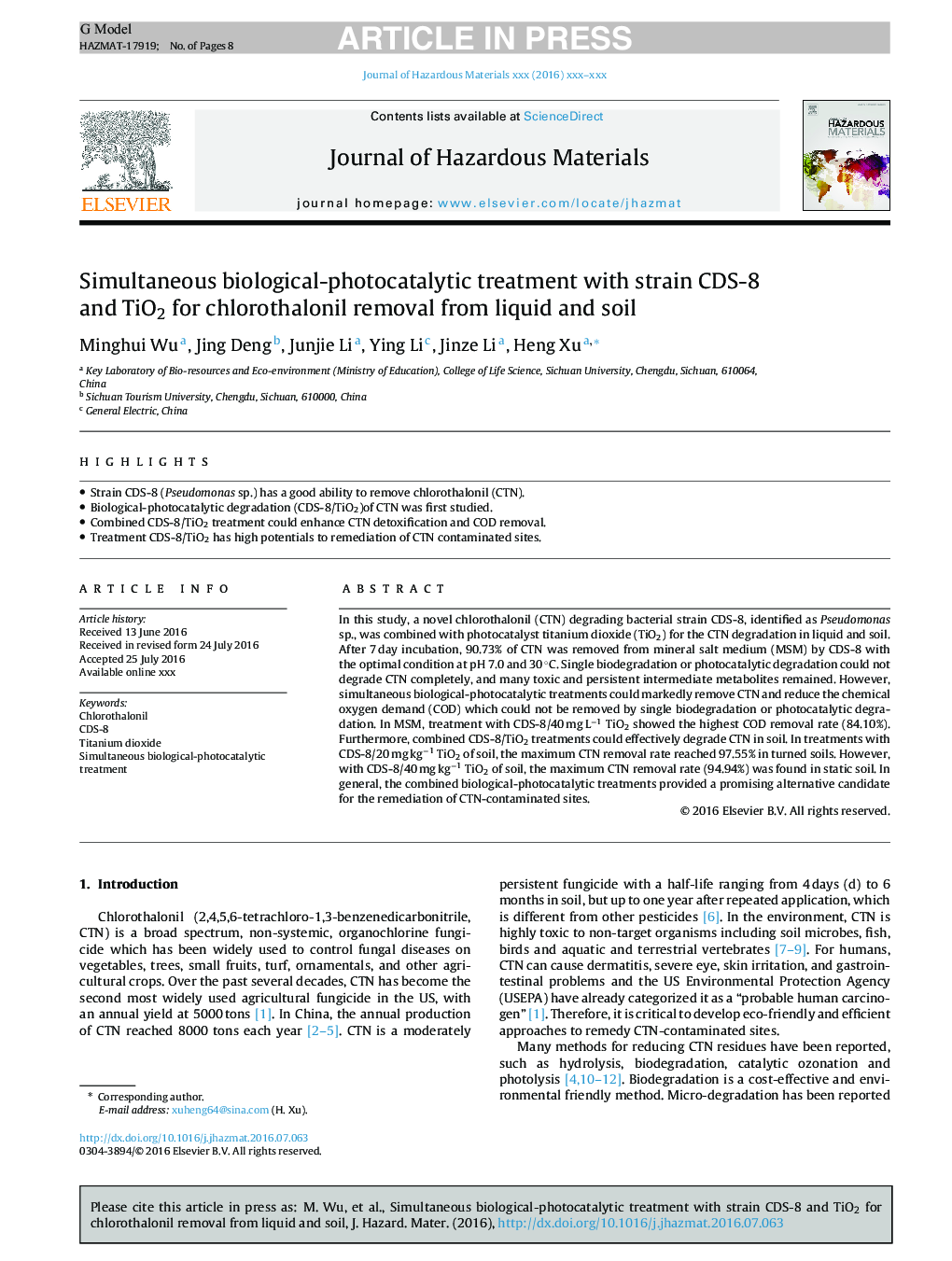| Article ID | Journal | Published Year | Pages | File Type |
|---|---|---|---|---|
| 6969772 | Journal of Hazardous Materials | 2016 | 8 Pages |
Abstract
In this study, a novel chlorothalonil (CTN) degrading bacterial strain CDS-8, identified as Pseudomonas sp., was combined with photocatalyst titanium dioxide (TiO2) for the CTN degradation in liquid and soil. After 7 day incubation, 90.73% of CTN was removed from mineral salt medium (MSM) by CDS-8 with the optimal condition at pH 7.0 and 30 °C. Single biodegradation or photocatalytic degradation could not degrade CTN completely, and many toxic and persistent intermediate metabolites remained. However, simultaneous biological-photocatalytic treatments could markedly remove CTN and reduce the chemical oxygen demand (COD) which could not be removed by single biodegradation or photocatalytic degradation. In MSM, treatment with CDS-8/40 mg Lâ1 TiO2 showed the highest COD removal rate (84.10%). Furthermore, combined CDS-8/TiO2 treatments could effectively degrade CTN in soil. In treatments with CDS-8/20 mg kgâ1 TiO2 of soil, the maximum CTN removal rate reached 97.55% in turned soils. However, with CDS-8/40 mg kgâ1 TiO2 of soil, the maximum CTN removal rate (94.94%) was found in static soil. In general, the combined biological-photocatalytic treatments provided a promising alternative candidate for the remediation of CTN-contaminated sites.
Keywords
Related Topics
Physical Sciences and Engineering
Chemical Engineering
Chemical Health and Safety
Authors
Minghui Wu, Jing Deng, Junjie Li, Ying Li, Jinze Li, Heng Xu,
